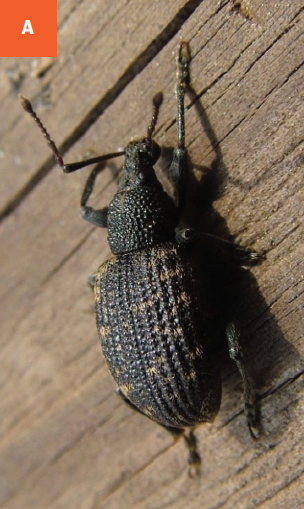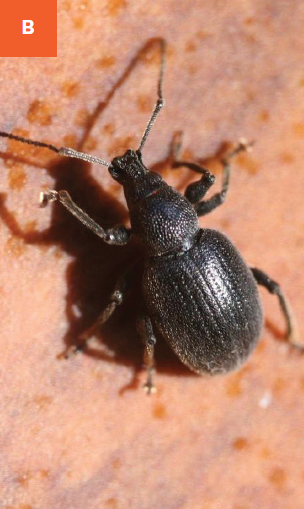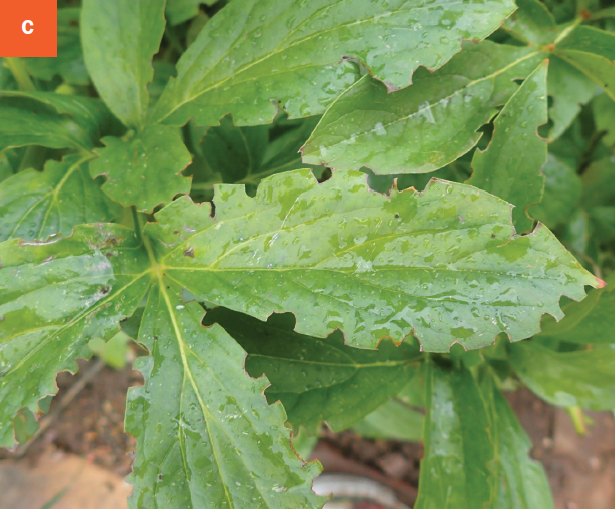Root Weevils
Several species (Otiorhynchus spp. and many others)
HOST Lilac, dogwood, grape, peony, spirea, many deciduous shrubs
DAMAGE/SYMPTOMS The characteristic damage from adults includes notching along the leaf margins from chewing. The larvae feed on plant roots.
LIFE CYCLE The weevils generally overwinter as full-grown larvae in the roots of plants. Pupation occurs in the spring, and adults emerge in early June. Some will survive as adults and overwinter in buildings or structures.
MANAGEMENT Most often, no management is necessary. If damage or dieback is evident on the woody ornamental, treatment might be necessary. Treatment is most effective when adults emerge in late May through early June. Contact insecticides that contain the active ingredients bifenthrin, cyfluthrin, or lambda-cyhalothrin can be applied in the evening when the adult beetles are active.
A Black vine weevil. B Strawberry root weevil. C Root weevil damage on lilac.



